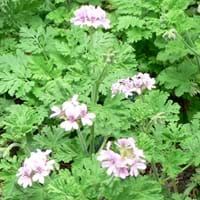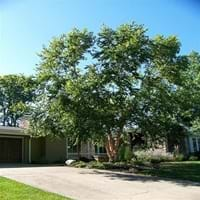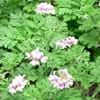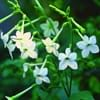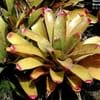Life Span
Annual
Biennial
Type
Tender Perennial
Tree
Origin
Hybrid origin
Mid-Atlantic United States, Southeastern United States, Central United States, South-Central United States
Types
herbaceous annuals
Yellow Birch, Paper Birch, River Birch
Number of Varieties
Not Available
Habitat
Temperate Regions, Tropical Forests
Hills, Moist Soils
USDA Hardiness Zone
10-15
4-9
AHS Heat Zone
Not Available
9-1
Sunset Zone
8, 9, 14, 15, 16, 17, 18, 19, 20, 21, 22, 23, 24
1a, 1b, 2a, 2b, 3a, 3b, 4, 5, 6, 7, 8, 9, 10, 11, 12, 13, 14, 15, 16, 17, 18, 19, 20, 21, 22, 23, 24
Habit
Clump-Forming
Oval or Rounded
Flower Color
White, Light Pink
Yellow, Brown
Flower Color Modifier
Bicolor
Bicolor
Fruit Color
Not Available
Black
Leaf Color in Spring
Green, Yellow green
Green, Light Green
Leaf Color in Summer
Green, Gray Green, Yellow green
Green, Light Green
Leaf Color in Fall
Green, Gray Green, Yellow green
Yellow, Light Yellow, Tan
Leaf Color in Winter
Light Green
Not Available
Leaf Shape
Linear to lanceolate
Pinnate
Plant Season
Spring, Summer, Fall, Winter
Spring, Summer, Fall, Winter
Sunlight
Full Sun, Partial Sun
Full Sun, Partial Sun
Type of Soil
Loam, Sand
Clay, Loam
The pH of Soil
Neutral, Alkaline
Acidic, Neutral
Soil Drainage
Well drained
Average
Bloom Time
Indeterminate
Spring
Tolerances
Drought
Wet Site, Pollution, Soil Compaction
Where to Plant?
Ground
Ground
How to Plant?
Root Division, Seedlings
Seedlings
Plant Maintenance
Medium
Medium
Watering Requirements
Water when soil is dry
Requires watering in the growing season, Water daily during growing season, Water Deeply, Water more frequently during periods of extreme drought
In Summer
Lots of watering
Lots of watering
In Spring
Moderate
Moderate
In Winter
Average Water
Average Water
Soil pH
Neutral, Alkaline
Acidic, Neutral
Soil Type
Loam, Sand
Clay, Loam
Soil Drainage Capacity
Well drained
Average
Sun Exposure
Full Sun, Partial Sun
Full Sun, Partial Sun
Pruning
Remove damaged leaves, Remove dead branches, Remove dead leaves
Remove branches, Remove damaged leaves, Remove dead branches, Remove dead leaves, Remove dead or diseased plant parts, Remove hanging branches
Fertilizers
All-Purpose Liquid Fertilizer
All-Purpose Liquid Fertilizer, fertilize twice a year, Nitrogen
Pests and Diseases
Red blotch
Red blotch
Plant Tolerance
Drought
Pollution, Soil Compaction, Wet Site
Flower Petal Number
Single
Not Available
Fragrant Bark/Stem
Yes
No
Foliage Texture
Medium
Medium
Foliage Sheen
Matte
Matte
Attracts
Butterflies
Ants, Aphids, Birds, Not Available
Allergy
Not Available
Not Available
Aesthetic Uses
Landscape Designing, Showy Purposes
Not Used For Aesthetic Purpose
Beauty Benefits
Not Available
Good for skin
Environmental Uses
Air purification
Air purification, Nesting sites for birds, Shadow Tree, Shelter for wildlife, Wildlife
Medicinal Uses
Fever, Intestinal irritations, Kidney problems, Respiratory Disorders, Wounds
Antibacterial, anti-inflammatory, Arthritis, Boils, bowel syndrome, Combats Stress, Diarrhea, Dysentry, Heart problems, Kidney Stones, Osteoarthritis, Skin Disorders, Urinary tract problems
Part of Plant Used
Flowers, Leaves, Seeds
Bark, Leaves, Sap
Other Uses
As a tea substitute, Culinary use, Medicinal oil, Oil is used in perfume, soaps, creams, etc., Used as essential oil, Used As Food
Medicinal oil, Used as essential oil
Used As Indoor Plant
No
No
Used As Outdoor Plant
Yes
Yes
Garden Design
Bedding Plant, Container, Edging, Hanging Basket, Herb / Vegetable, Houseplant, Mixed Border, Rock Garden / Wall, Tropical
Feature Plant, Shade Trees
Botanical Name
PELARGONIUM 'Bitter Lemon'
BETULA nigra 'Studetec'
Common Name
Bitter Lemon Scented Geranium, Scented Geranium
Black Birch, River Birch, Tecumseh Compact River Birch
In Hindi
Pelargonium
काले बर्च वृक्ष
In German
Pelargonium
Schwarze Birke
In French
pélargonium
Noir Bouleau
In Spanish
pelargonium
Negro del árbol de abedul
In Greek
Pelargonium
Μαύρο Birch Tree
In Portuguese
pelargônio
Bétula Preto
In Polish
pelargonia
Czarny Brzoza
In Latin
Pelargonium
Niger Caerulus
Phylum
Magnoliophyta
Magnoliophyta
Class
Magnoliopsida
Magnoliopsida
Family
Geraniaceae
Betulaceae
Clade
Angiosperms, Eudicots, Rosids
Angiosperms, Eudicots, Rosids
Tribe
Not Available
Not Available
Subfamily
Not Available
Not Available
Season and Care of Scented Geranium and Black Birch
Season and care of Scented Geranium and Black Birch is important to know. While considering everything about Scented Geranium and Black Birch Care, growing season is an essential factor. Scented Geranium season is Spring, Summer, Fall and Winter and Black Birch season is Spring, Summer, Fall and Winter. The type of soil for Scented Geranium is Loam, Sand and for Black Birch is Clay, Loam while the PH of soil for Scented Geranium is Neutral, Alkaline and for Black Birch is Acidic, Neutral.
Scented Geranium and Black Birch Physical Information
Scented Geranium and Black Birch physical information is very important for comparison. Scented Geranium height is 38.14 cm and width 45.70 cm whereas Black Birch height is 2,133.60 cm and width 762.00 cm. The color specification of Scented Geranium and Black Birch are as follows:
Scented Geranium flower color: White and Light Pink
Scented Geranium leaf color: Green and Yellow green
Black Birch flower color: Yellow and Brown
- Black Birch leaf color: Green and Light Green
Care of Scented Geranium and Black Birch
Care of Scented Geranium and Black Birch include pruning, fertilizers, watering etc. Scented Geranium pruning is done Remove damaged leaves, Remove dead branches and Remove dead leaves and Black Birch pruning is done Remove branches, Remove damaged leaves, Remove dead branches, Remove dead leaves, Remove dead or diseased plant parts and Remove hanging branches. In summer Scented Geranium needs Lots of watering and in winter, it needs Average Water. Whereas, in summer Black Birch needs Lots of watering and in winter, it needs Average Water.
